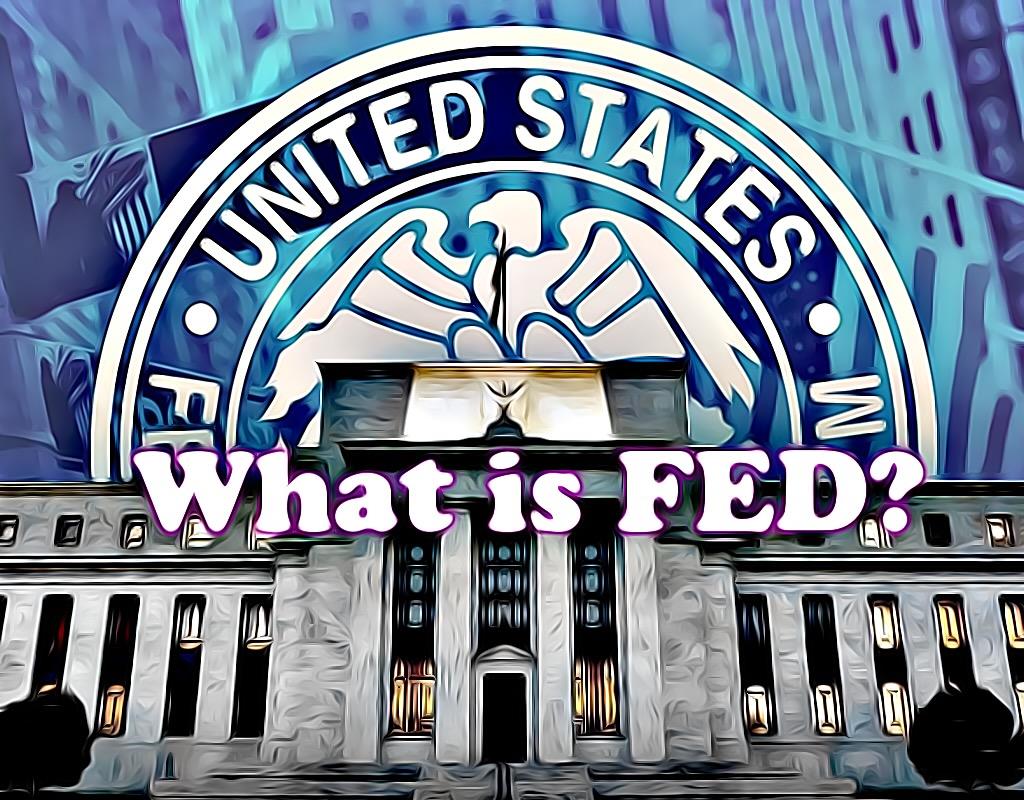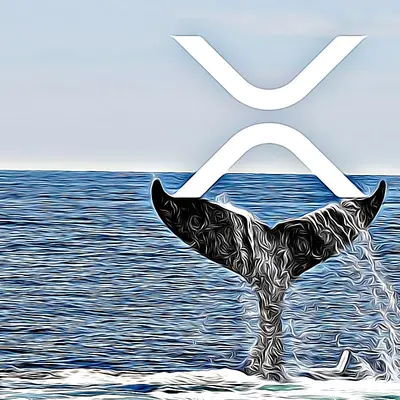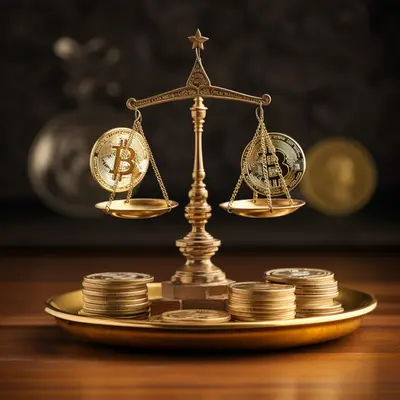What is the Fed? Learn about the US Federal Reserve?
Regardless of whether you are an old trader or simply a novice trader, you must pay attention to the decisions of the Fed. Find out with us what the Fed is, how the decisions of the Fed affect the world economy?

What is the Fed?
The Fed (Federal Reserve System), also known as the Federal Reserve, is the central bank of the United States, established on December 23, 1913. The Fed was signed by President Woodrow Wilson under the "Federal Reserve Act" to maintain a flexible, stable and safe monetary policy for the United States.
The Fed is completely independent and is not dependent or influenced by the US government. This is the only organization in the world that is allowed to print USD (US dollars). Therefore, the Fed plays an important role in planning as well as adjusting monetary policy. The Fed's changes in interest rates and money supply will directly affect the market and investors.
The current Fed chair is Jerome Powell, nominated by President Donald Trump to head the US Federal Reserve in November 2017.

The History of the Fed
In 1791 , Alexander Hamilton - America's first Secretary of the Treasury - submitted to Congress the creation of a central bank called the First Bank of the United States (BUS1) for the purpose of solving money problems. currency of the United States. The US President at that time, Mr. Washington, signed this proposal and allowed it to operate for 20 years (1791 - 1812).
In 1812 , when BUS1 had just expired, the war between the US and Britain broke out. This war caused the US to face a lot of financial difficulties, banks in the US were almost insolvent due to prolonged debt status, investment for US military operations.
In that context, President Madison put pen to paper on a decision approving the establishment of a Second Bank of United States (BUS2) to re-establish the economy and monetary policy in the United States. This validity also has a term of 20 years (1816 - 1836).
After BUS2, the period from 1862 to 1913 occurred a series of fluctuations in the banking sector in the United States. Especially the period 1907 witnessed the crisis in the banking system. At this time, the US Congress decided to establish a "National Monetary Committee" with the task of developing a plan to reform the banking system to meet the needs of market coordination.
Nelson Aldrich, the Republican head of congress and a financier, was appointed chairman of the National Monetary Commission. He conducted a series of surveys and studied advanced models of the central banks of England and Germany. He then proposed that a new Federal Reserve be created that would address the root of the problem. However, his proposal was opposed to Congress in 1911 because the majority of seats in parliament were held by Democrats.
In 1913 , President Woodrow Wilson did everything possible to influence and pass Aldrich's act to establish the Federal Reserve. Finally, the Federal Reserve Act was passed in late 1913 and the Fed officially came into operation in 1915.
The role and duties of the Fed
The United States has gone through a period without the existence of the Fed and has experienced quite a few economic shocks that affect its growth rate. Therefore, the establishment of the Fed is necessary. Initially, the US Congress only identified 3 basic goals of the Fed: increasing job opportunities, stabilizing prices and adjusting interest rates.
However, since 2009, the role and tasks of the Fed have been expanded and are clearly shown through the following four main ideas:
- Implement monetary policies aimed at stabilizing employment and stabilizing market prices. At the same time, the effect of adjusting interest rates in the long term.
- Conduct supervision of credit institutions and banks in order to ensure the safety of the financial system and ensure the legitimate interests of people and borrowers.
- Detect, prevent and propose solutions to possible risks affecting the US financial market.
- Provide financial services to financial institutions of the US government, financial institutions abroad. At the same time, playing a key role in operating the payment system of the country.
The Nature of the Fed
This agency is completely independent, independent of and unaffected by the US government. When it has to take on many important roles, independence will help the Fed to make policies in line with reality, ensure the stability of the federal financial system and help the economy of the whole country develop according to the current situation. correct direction.
The Fed's reserve is also the place where the largest concentration of money and gold in the world is concentrated. The New York City Bank of the US Federal Reserve currently holds 25% of international gold reserves, and most of it is international gold deposits.
Policy independence
The Fed is free to make monetary policy decisions without having to go through anyone in the executive and legislative branches of the government.
The Fed is free to use tools to adjust lending and deposit interest rates. The currency rate of the USD, and at the same time, provides the required reserve level to serve the FED's maximum task of stabilizing prices. Creating a premise for the sustainable development of the economy
Financial independence
The Fed does not receive allotted funding from Congress.
The Fed has its own operating budget through asset management.
Although not funded by the government, all operating profits of the Fed go back to the government. The Fed is considered a money printing machine when it generates tens of billions of dollars in annual profits.
Independence in organization and personnel
Unlike the 4-year term of the US President, the members of the council have a term of up to 14 years. This means that the Fed operates continuously and has many different presidential terms.
However, the president does not have the power to interfere in the decisions of the Fed, but the president has the power to remove the chair of the Fed, although this possibility is not high.
In the historical context, US President Donald Trump has repeatedly criticized the Fed as a "stubborn child" for refusing to lower the USD interest rate as he wanted.
The organizational structure of the Fed

1. Board of Governors (Federal Reserve Board)
- Composed of 7 members, approved by the President and Congress.
- Each term has 14 years, goes through many presidents and works until the end of the term. Unless removed by the President.
- The Board of Governors cannot serve more than 2 terms.
- This is an agency operating independently of the federal government, responsible for formulating and concretizing monetary policy.
- Regulates and oversees the operations of the 12 federal reserve banks and the entire US financial system.
2. Federal Open Market Committee (FOMC)
- Consists of 7 members on the Board of Governors and 5 presidents of the Federal Reserve Bank.
- This agency is responsible for implementing the monetary policy of the United States.
- The FOMC holds eight meetings a year to set interest rates in the money supply.
- The majority of FOMC decisions affect credits to businesses and consumers.
3. Federal Reserve Banks

- Including 12 federal reserve banks scattered throughout the United States such as Boston, New York, Philadelphia, Cleveland, Richmond, Atlanta, Chicago, St. Louis, Minneapolis, Kansas City, Dallas and San Francisco.
- Federal Reserve Banks are not an instrument of the Federal Government. They are independent local private banks.
- Many banks in the above list also issue shares on the market.
- Banknotes issued by the Fed are the money supply and are put on the market for circulation through federal reserve banks in the region.
Reasons for the Fed to raise interest rates
Currently, the US Federal Reserve is stepping up to raise interest rates to control inflation. This warns of an increasing risk of an economic recession. When the Fed raises interest rates, it can slow down the economic activities of the country. However, at present, the US economy still has a fairly stable foundation so that if it happens, it will be mild and in a short time.

In general, in the past time, the FED has raised interest rates many times in the past time to curb inflation. This has a huge impact on most assets such as real estate, stocks, raw materials, commodities, and especially crypto.
For a deeper understanding, the main reasons why the Fed raises interest rates are usually:
- Once the Fed realizes that the economy is growing too fast, the Fed will make decisions to raise interest rates. This is a preparatory step so that when the market cools down and shows signs of going down, it will decide to lower interest rates to stimulate economic demand.
- The current interest rate is still too low if you subtract the rate of inflation. If in the US the announced interest rate is 2.5%/year, the inflation rate is 1.5%/year, the real interest rate is only 1%/year. A rather modest number makes the Fed decide to raise interest rates.
- An increase in interest rates will reduce the amount of money consumers borrow to spend on liabilities. This will limit the creation of debt bubbles in the financial markets. Direct consumers to borrow money to invest in other assets to generate cash flow movement.
Impact of interest rate hike
Because it is undeniable that the decisive role of the world economy is largely in the US dollar, the dollar has long been considered the most widely used fiat currency in the world. Import and export trade activities have a direct or indirect effect on the USD.
Therefore, when the Fed decides to raise interest rates or reduce interest rates, the USD will be affected first because the Fed's interest rate hikes cause the USD exchange rate against domestic currencies to increase, creating favorable conditions for exports. . However, this creates difficulties for imports and creates import inflation pressure for the countries that trade deficit to increase, and vice versa.
Rising interest rates cause volatility in the financial market, including the movement of indirect investment capital. Accordingly, some investors will seek refuge in safer channels. They tend to move part of their portfolio back to the US and other regions where interest rates rise and the risk is acceptable. This means that the majority of investors will prefer to transfer their assets to fiat currency and more specifically USD to hold. As a result, the scarcity of USD will increase and the price of USD will increase at the same time.

In particular, traders in the Forex and crypto markets often trade USD or stablecoin tokens such as USDC, USDT with the same exchange rate as USD. It is essential for traders to pay attention to the decisions of the Fed to avoid burning their accounts when trading.
Fed's monetary policy in the future
It is difficult to predict the Fed's monetary policy in the coming years because the Fed's decision to raise interest rates depends on the reaction of the economy to previous interest rate hikes. Thus, traders or investors can only passively wait for the decisions of the Fed after each meeting to determine the next course of action.
Aug 20, 2022
















